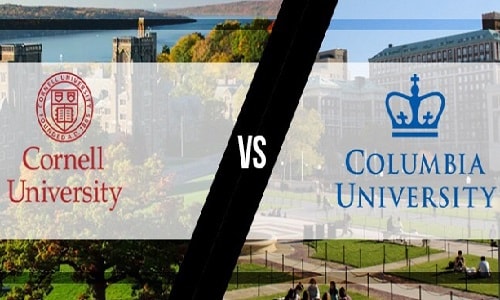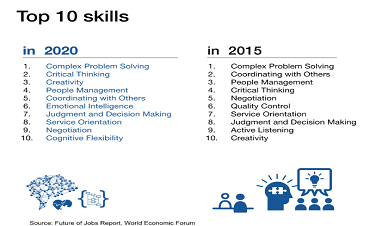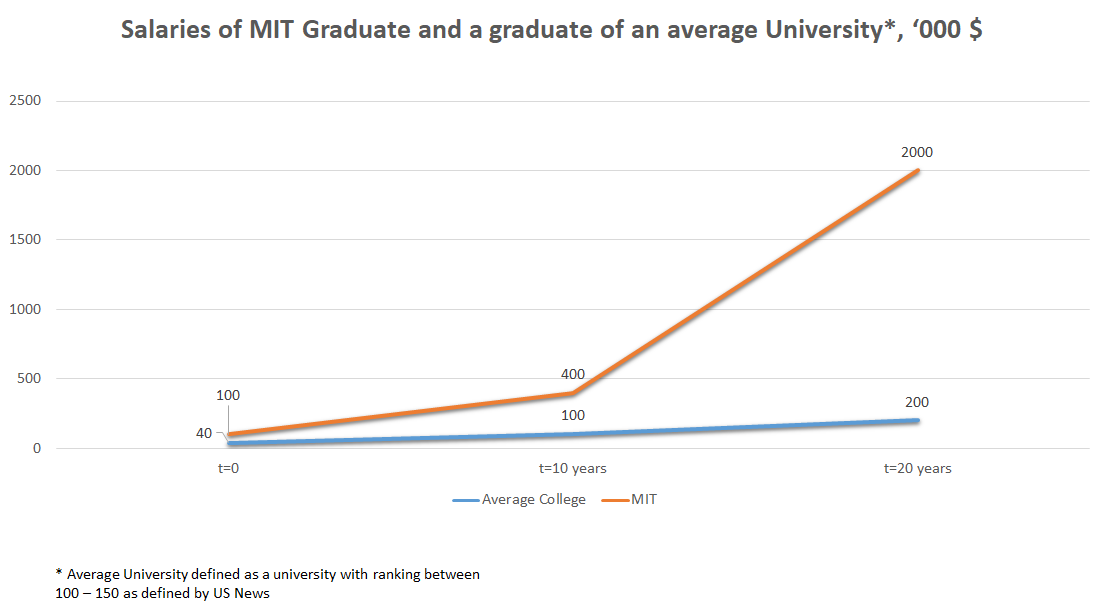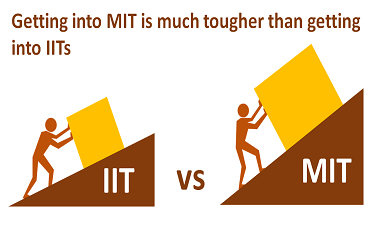How to reduce your cost of US undergraduate studies?
- Written by UnivAdmitHelp
- Category: Insights & Information
- Published on 22 Feb 2019
Credits - Abhijeet Manohar
Attending a university used to be a luxury, but today it’s a necessity! And with that being said, the biggest barrier to quality international education is COST. According to CollegeBoard,
Cost of Attendance:
- Tuition Fee
- + Room & Board
- + Books & Supplies
- + Personal Expenses
- + Transportation
If we work towards reducing each of these aspects, the total tuition cost will fall dramatically.
I. Tuition Fee - The Monster!
Variables that determine Tuition Fee:
- Enrolled Academic Program
- The number of Credit Hours taken
- International/Domestic Fee as applicable
Here’s how you can reduce your Tuition expenses —
- Advanced Placement(AP) Examinations —
Stay calm! If your school offers AP Courses, take as many as you can throughout your high school!
But guess what? Even if your school doesn’t offer AP Courses & Exams, you are eligible to register in your country/city. These are usually conducted once a year but you mustneed to self-study for the exams. BTW if you are unaware about the exam and the subject content ?! Learn here —
WHY AP Exams/Benefits= Save tuition fee on elementary-level college courses + Save TIME (Time is Money!)
For example -
UC Berkeley grants credit for AP Exams —
|
|
|
|
|
AP Examination |
AP Credits |
Approx. Cost($) |
|
Calculus BC |
8 Credits |
10,670 |
|
Physics C: Mechanics |
4 Credits |
5,330 |
|
Physics C: E & M |
4 Credits |
5,330 |
|
MicroEconomics |
4 Credits |
5,330 |
|
Macroeconomics |
4 Credits |
5,330 |
|
World History |
8 Credits |
10,670 |
|
US History |
8 Credits |
10,670 |
Learn about AP Exams:
- Explore AP on Collegeboard Website.
- AP Subjects Offered by College Board (highly dependent on your geographic location and number of examinees!)
Some AP Tips:
- Exam based on syllabus covered during high school..So Don’t Fear! Face it!
- Take AP Exams before your senior year > Showcase them on your college applications (WHY? To flex your academic rigour!!)> Increase your chance of acceptance to universities.
- Bonus for International Applicants!
- Early Application to Universities
According to Collegeboard, for the academic year 2014–15:
- More than $183.8 billion was available as financial aid to undergraduate students which came from various sources — Federal government grants, loans and other aid: 67%, College grants/ scholarships: 22%, Private & employer grants/scholarships: 6%, State government grants/scholarships: 5%.
- Unfortunately, the current student loan debt in the United States has exceeded $1.5 trillion dollars.
With the huge demand for financial aid by students, it is suggested to apply in the Early Round to win a big lottery as financial aid.
Why Early Application?
a.Limited funds for international students at universities.
b.Probability of receiving aid OR comparatively more aid from the regular round is HIGH, undoubtedly.
Some Early Application Bites -
- Highly suggested for International Applicants, as funds at universities are limited for the international pool.
EXAMPLES:
- USC(University of Southern California) provides Merit Scholarships like Mork Family Scholarship, Presidential Scholarship, etc. If applied before DEC 1(as per 2018 calendar) — includes covering of full-tuition fee, half-tuition fee, etc.
- Vanderbilt University has several scholarship opportunities (will include specific names) only if applied Early.
- UW-Madison has numerous scholarship opportunities with early deadlines.
…… And the list continues !!
Why wait?! Look for the scholarships at the universities you would apply and boost your chance of securing Scholarships and Aids by applying before the specified deadline.
Do note though, that some of the competitive universities do not ‘explicitly’ offer scholarships in Early Application deadlines. Notably, the likes of MIT, Princeton, UIUC, UPenn offer scholarships only in regular decisions. EA/ED applicants are excluded!
- Study Abroad Programs
Usually, most of the universities have collaboration with foreign universities to help students explore new opportunities, places, cultures and traditions through the Study Abroad Program.
Why choose Study Abroad Program:
- Financial Benefit — Complete a part of your education (semester/quarter) in a country where the currency conversion rate is low AND Cost of Living is significantly less, thereby save money.
- College Exploration Benefit — Transfer to a highly competitive university like Princeton University, UCs for a semester and explore new courses at the same tuition fee of your parent university.
- Explore a new country and scratch off your dream places!!
Scenario 1: University College Dublin has collaboration with universities like UC San Diego, UC Davis etc. With the same tuition fee of UC Dublin, you can explore the universities in California thereby save tuition and explore new places.
Scenario 2: Many local universities, such as Shiv Nadar University in Delhi NCR have partnerships with marquee universities such as UC Berkeley and regularly send students to study for a semester at the famed institute. As a result, at a fraction of cost one can study at a top US university. Additional benefits of dialing into a top-research and innovation ecosystem, LORs (Letters of Recommendations), experiencing the Californian way of life are extra!
- Internship Opportunities —
Benefits:
- Gain Work Experience (super-helpful later)
- + MONEY (use it for your tuition fee!)
Unfortunately, paid internships are very limited for undergraduate students; but trying to get one could actually get you an internship opportunity! However, companies like LinkedIn have hired first year undergraduates for internships and the next could be you!
- Summer Opportunities
Benefits:
- Earn credits during summer
- + Save Money (Financial Aid to domestic students)
- + Save time (And as said..Time is Money!!!)
- Stanford Summer Session — Credit-based 8–10 week-long summer program (Stanford Quarter) offering more than 50 courses and an opportunity to earn upto 12 credits. Tuition grants available to only Domestic students.
- Harvard Summer School — Credit-based Summer program
- External Scholarship Opportunities
Have you ever visited the 11th page of Google Search Results to look for your dream scholarships? Maybe not? And guess what — That’s the secret/key to your dream scholarships. Here are a few examples from the 11th page of Google Search Results -
- University-Specific Scholarship/Funding —
|
Scholarship Name |
University |
Eligibility |
Award |
Remarks |
|
Mork Family Scholarship |
University of Southern California |
Incoming Freshmen |
$51,000/year (Full-Tuition) |
+$5000/year - Housing, etc. |
|
Presidential Scholarship |
University of Southern California |
Incoming Freshmen |
$25,000/year (Half-Tuition) |
200 Awards/year |
|
Stamps Scholarship |
University of Southern California |
Incoming Freshmen |
$51,000/year (Full-Tuition) |
+$20,000/year over 4 years; 5 Awards/year |
Now, it’s your turn to find Scholarships at Your University.
- Ethnic-based Scholarship/Funding —
|
Scholarship Name |
Eligibility |
Award |
Remarks |
|
Blacks at Microsoft |
High School Senior of African Descent |
$5,000/year |
Upto 4 years; 2 Awards |
|
UNCF Scholarship |
Depends on residence location |
Combined $100 million |
|
|
Gates Millenium Scholarship |
African American, Indian American, Alaska Native |
$12,785 approx/year |
1000 Scholars/year |
|
Hispanic Scholarship Fund |
Required GPA; Hispanic Heritage |
$500-$5000 |
High School Senior, Undergraduate, Graduate |
….And there are more. Start Searching !!
- Major-based Scholarship/Funding —
|
Scholarship |
Major |
Eligibility |
Award |
|
(ISC)² Graduate Cybersecurity Scholarship |
Computer Science(CyberSecurity) |
High School Senior, Undergraduate |
$5000 |
|
ACLS Medical School Scholarship |
Medicine, Nursing, Dentistry |
Enrolled at Medical School |
$2500 |
|
Aerosmith Scholarship |
Music/Business/Management |
Enrolled At Berkeley College of Music |
Varies |
|
Jim Funk Scholarship |
Business Administration |
Enrolled at 4-year university |
Varies |
- Need-based Scholarship/Funding — Available through CSS Profile at several universities for international students.
We do see some specific patterns though - in general scholarships are more ‘available’ for universities on the East Coast of the US and not so much for the ‘West Coast.’ Not really sure about the reason, but it is similar in many ways to unusually restrictive Californian policies with regards to non-state entities.
While you shall find many university specific scholarships, and they are always available to you, the focus before coming to the school should be to find external scholarships (many of them originate in your country of origin, for instance) - J N Tata Scholarship, and many more. You can always find the school specific scholarship, once you are there at the university.
AND UNDOUBTEDLY THERE ARE MANY MORE SCHOLARSHIPS!
- Research and Teaching Opportunities —
Serve as Teaching Assistant (TA) or Research Assistant (RA) at your university in the course you love the most!
Benefits:
- Gain Research/Teaching experience
- + Pocket Money (around 10$+/hour)
Scenario 1: Let’s assume you serve as TA under Prof. Dorf and you work for 5 days and 2 hours everyday . You earn 5*2*10(dollars/hour) = $100! Spend the $100 for buying your favourite drink at Starbucks and stationary items, without bothering your parents!
II. Room & Board
- Average Room & Board Charges : $10,000–$15000, with private universities on the upper end.
- Universities require first-year students to live on-campus for which the cost is unavoidable.
III. Books & Supplies
- Range - $800–1200/year
- Want to save money here? Use the Library, borrow books from seniors, Use Books on Rent, or find another innovative way!
IV. Personal Expenses
- Range — $600–1300/year
- Varies on an individual level for each student.
- Want to save money here? Work at your university and earn money during your course.
V. Transportation
- Range - $300–600/year
- Factors - Domestic/International Student (Air-ticket)+In-state transportation.
Conclusion
In order to calculate your cost of attendance, you could use the table below:
|
Variable |
Cost/Year |
|
Tuition |
t |
|
Room & Board |
r |
|
Books & Supplies |
b |
|
Personal Expenses |
p |
|
Transportation |
t |
|
Scholarship Received |
s |
|
Potential Scholarships |
p |
|
TOTAL |
t+r+b+p+t-s-p |
Total Cost of Attendance(COA)/year = U Calculate !!
UPDATE:
There is another way that students can save a lot of money on tuition:
Some universities offer a pricing system which can be termed as pay-per-course as opposed to paying for the complete semester. In such cases, it might be possible to opt for some non-core courses at a cousin college. For example:
University of Wisconsin-Madison offers a course in Computer Science. As non-core subjects, there are courses like Ethnic studies, History, Religious Studies (approximately 4500USD each). University of Wisonsin-Milwaukee, a cousin college, offers the same courses at a lower cost (approximately 800USD each). Students can thus apply to the local state schools for online and offline classes (preferably online), while continuing to study at the primary institution.
If you follow this pattern, you could save upto 1 year of college cost in general.
Of course this only applies to certain universities which allow this system. More importantly, you should opt for this only if it doesn’t dilute the impact of your primary program.
Further Reading:
Scholarships for Indian Students MiM
Scholarships and Aid Programs for Undergraduate Study in the US
Recent Posts
-
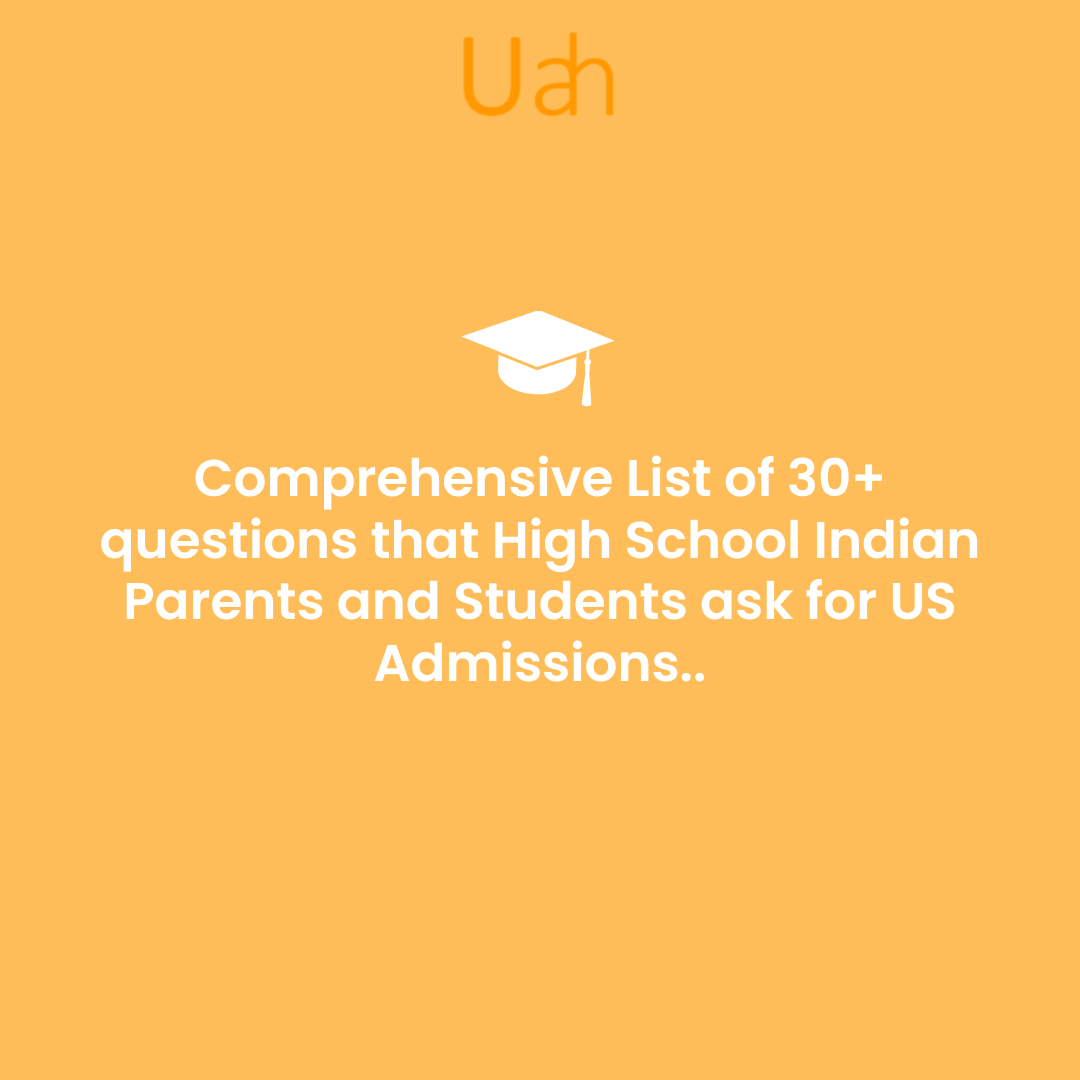
Comprehensive List of 30+ questions that High School Indian Parents and Students ask for US Admissions..
-
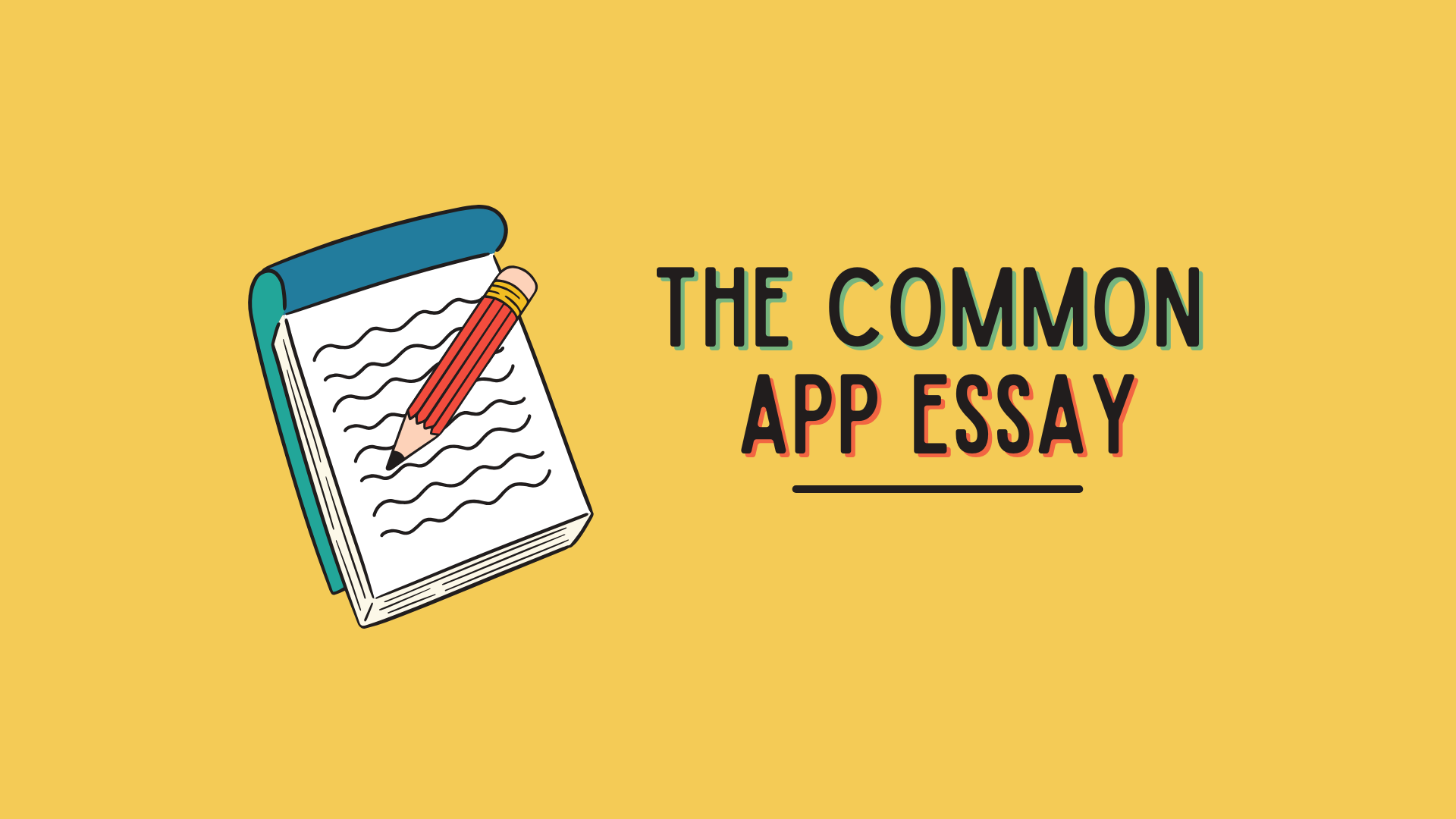
Common App Essay Tips 2025
-

Best extra-curricular activities for college admission for Indian students
-

How Many Universities Should You Apply To? Expert Tips for U.S. and U.K. Admissions for Indian Students
-

Step-by-Step Guide to Creating an Exceptional Capstone Project for Indian Students
